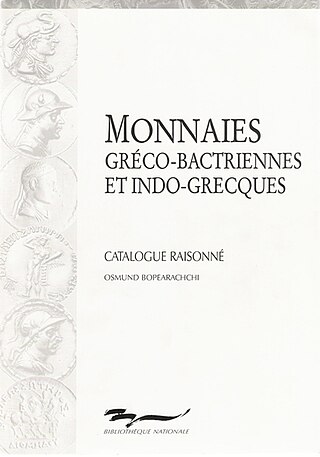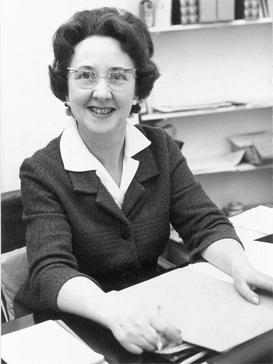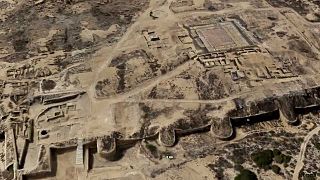
Sindhology is a field of South Asian studies and academic research that covers the history, society, culture, literature and people of Sindh, Pakistan. The subject was first brought into the academic circles with the establishment of the Institute of Sindhology at Sindh University in 1964. Since then, it has developed into a discipline that covers the aspects of history and archaeology from the Indus Valley civilization to the modern Sindhi society. The subject has also received wider attention at international levels. An academic or expert who specialises in Sindhology is called a Sindhologist.
The Persian Princess or Persian Mummy is a mummy of an alleged Persian princess who surfaced in Pakistani Baluchistan in October 2000. After considerable attention and further investigation, the mummy proved to be an archaeological forgery and possibly a murder victim.

Osmund Bopearachchi is a Sri Lankan historian and numismatist who has specialized notably standardized the coinage of the Indo-Greek and Greco-Bactrian kingdoms. He is currently Emeritus Director of the CNRS at the École normale supérieure and Adjunct Professor of Central and South Asian Art, Archaeology, and Numismatics, University of California, Berkeley.
Jonathan Mark Kenoyer is an American archaeologist and George F. Dales Jr. & Barbara A. Dales Professor of Anthropology at the University of Wisconsin–Madison. He earned his Bachelor of Arts, Master's, and Doctorate degrees at the University of California, Berkeley, finishing in 1983. Kenoyer is president of the Society of Bead Researchers.

Wazir Mansion, officially known as Quaid-e-Azam Birthplace Museum is a former family home in the Kharadar district South at Karachi, Sindh, Pakistan which is considered the birthplace of the country's founder, Muhammad Ali Jinnah.

The Lahore Museum is a museum located in Lahore, Punjab, Pakistan. Founded in 1865 at a smaller location and opened in 1894 at its current location on The Mall in Lahore during the British colonial period, Lahore Museum is Pakistan's largest museum, as well as one of its most visited ones.

The Peshawar Museum is a museum located in Peshawar, capital of Pakistan's Khyber Pakhtunkhwa province. The Peshawar Museum is notable for its collection of Buddhist artwork dating from the ancient Gandhara region.

The Chaukhandi tombs form an early Islamic cemetery situated 29 km (18 mi) east of Karachi, Sindh province of Pakistan. The tombs are notable for their elaborate sandstone carvings. The tombs are similar in style to the elaborate tombs at the Makli Necropolis near Thatta, and are built in the funerary architectural style typical of lower Sindh.
Muhammad Rafiq Mugal is a Pakistani archaeologist, engaged in investigating of ethnoarchaeological research in Chitral, northern Pakistan. He has been responsible for the direction, technical support and supervision for restoration and conservation of more than thirty monuments and excavated remains of the Islamic, Buddhist and Proto-historic periods, in Punjab, Khyber-Pakhtunkhwa and Gilgit-Baltistan of Pakistan. He served as a professor of archaeology and heritage management and the director of undergraduate studies at Boston University. He is now Professor Emeritus of Archaeology at Boston University.

The National Museum of Pakistan is a public museum located in Karachi, Pakistan.
Nabi Bakhsh Khan Baloch was a Sindhi research scholar, historian, sindhologist, educationist, linguist and writer. He predominantly wrote in Sindhi, including Urdu, English, Persian and Arabic. He has been described as the "moving library" of the Pakistani province of Sindh.

Taxila Museum is located at Taxila, Punjab, Pakistan. The museum is home to a significant and comprehensive collection of Gandharan art dating from the 1st to the 7th centuries CE. Most objects in the collection were excavated from the ruins of ancient Taxila.

Awadh Kishore Narain was an Indian historian, numismatist and archaeologist, who published and lectured extensively on the subjects related to South and Central Asia. He was well known for his book, The Indo-Greeks, published by Clarendon Press in 1957, in which he discussed the thesis of British historian Sir William Woodthorpe Tarn.
Kalmati or Karmati, Kalmat is a Baloch clan settled in the Balochistan and Sindh provinces of Pakistan.
Pakistani architecture is intertwined with the architecture of the broader Indian subcontinent. The major architectural styles popular in the past were Temple, Indo-Islamic, Mughal and Indo-Saracenic architecture, all of which have many regional varieties. With the beginning of the Indus civilization around the middle of the 3rd millennium BC, for the first time in the area which encompasses today's Pakistan an advanced urban culture developed with large structural facilities, some of which survive to this day. This was followed by the Gandhara style of Buddhist architecture that borrowed elements from Ancient Greece. These remnants are visible in the Gandhara capital of Taxila.

Beatrice Eileen de Cardi, was a British archaeologist, specializing in the study of the Persian Gulf and the Baluchistan region of Pakistan. She was president of the British Foundation for the Study of Arabia, and she was Secretary of the Council for British Archaeology from 1949 to 1973. At the end of her career, she was the world's oldest practising archaeologist.

Banbhore, Bambhore, Bhanbhore or Bhambhore is a city dating to the 1st century BCE located in modern-day Sindh, Pakistan. The city ruins lie on the N-5 National Highway, east of Karachi. It dates back to the Scytho-Parthian era and was later controlled by Muslims from the 8th to the 13th century, after which it was abandoned. Remains of one of the earliest known mosques in the region dating back to 727 AD are still preserved in the city. In 2004, Department of Archaeology and Museums Pakistan submitted the site for UNESCO World Heritage Sites.

State Bank of Pakistan Museum & Art Gallery is a museum on Ibrahim Ismail Chundrigar Road in Karachi, established in 2004 to introduce the first Monetary Museum of Pakistan. The current State Bank of Pakistan Museum & Art Gallery building, previously the Imperial Bank of India, is a Greco Roman building in Jodhpuri Red Sandstone constructed in the 1920s by the British government. In 2004, the State Bank of Pakistan decided to adapt the building as a museum; work on the projects started in 2006 and was devoted to conservation of the building and acquisition of the collection.

Kaleemullah Lashari is a Pakistani archaeologist, historian and author. In March 2019, the government of Pakistan awarded him the Sitara-i-Imtiaz, the third highest honour and civilian award in Pakistan. He works to preserve the cultural heritage of Pakistan.












